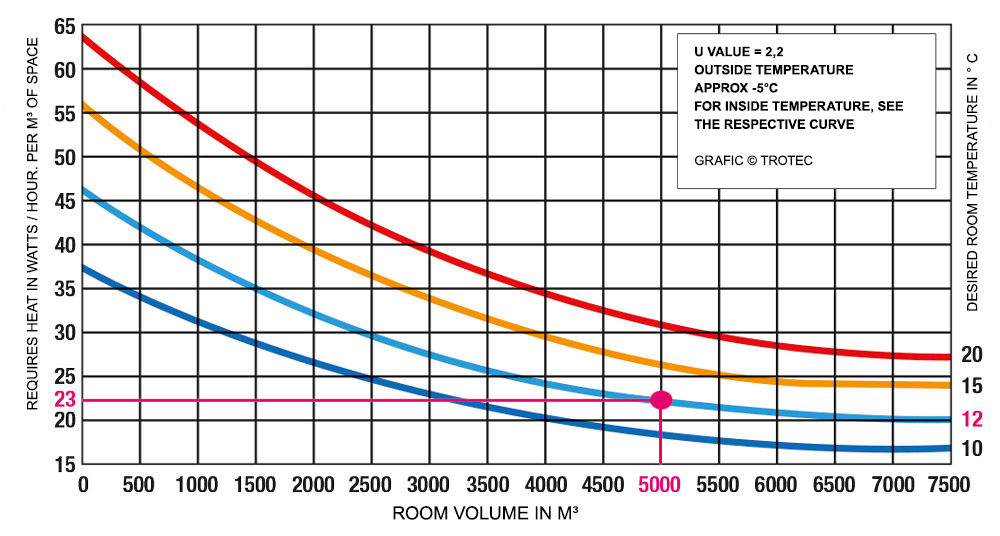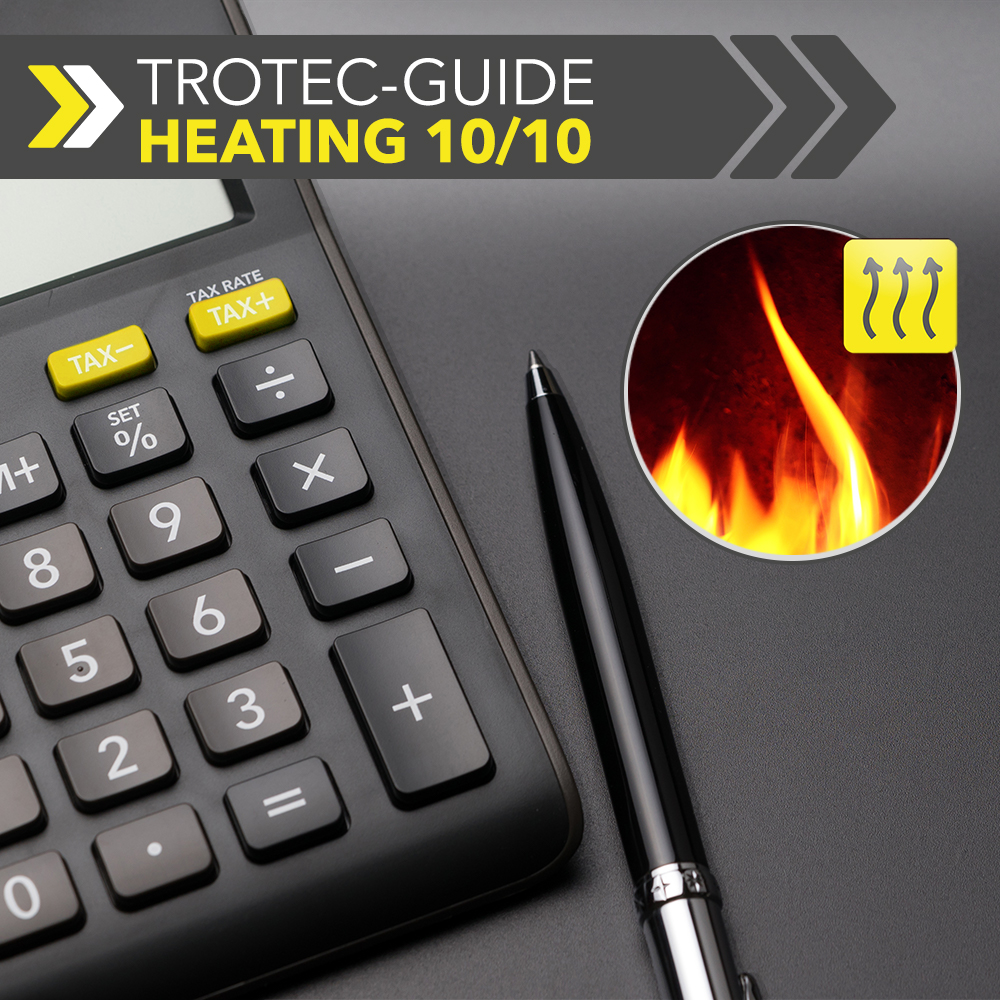What kind of heat output do you need for your rooms? You can determine that simply and conveniently with the help of out heat output calculator. And the best thing is: only very little information is required – such as specifying the room volume, the expected temperature difference and how well the room or building is insulated. In order for you to be able to retrace the calculation yourself, all the relevant aspects on calculating heat output are listed below.
This information is required to calculate the required heat output
- Which room temperature do you want?
- What is the current or expected minimum outside temperature?
- What is the overall volume of the room to be heated?
- What is the building’s average heat transmission coefficient (U-value)? Please refer to the following list to find this U-value.
List with the U-values for heating the building
- Very high insulation (modern passive-house standard) U = 0.2
- High insulation (modern low-energy houses) U = 0.5
- Good insulation (conventional new buildings as of 1984) U = 1.2
- Poor insulation (old buildings) U = 3.0
- No or almost no insulation (tents) U = 4.0
Calculating the heat output for rooms up to 1,000 m³
You calculate the overall heat output for small rooms up to 1,000 m³ using the formula:
Room volume (Q) x U-value x temperature difference = heat output in kcal
Sample calculation:
room volume (Q): 1,000 m³
Poor insulation (U): 3.0
Outside temperature: -5 °C
Desired room temperature: +12 °C
Temperature difference: 17 °C
Result for this example:
1,000 m³ x 3.0 x 17 °C = 51,000 kcal
Conversion from kcal to watts: (1 kcal = 1.16 watts = 4 BTU / hour)
51,000 kcal x 1.16 = 59,160 watts
Calculating the heat output for rooms from 1,000 m³
You can easily find out the overall heat output requirement for large rooms starting at 1,000 m³ upwards on the following diagram.
Reading example:
In order to heat a room volume of 5,000 m³ at an average outside temperature of -5 °C by 17 °C to a desired room temperature of 12 °C you need approx. 23 watts/m³.
The total heat requirement in this reading example is 5.000 x 23 W = 115,000 W = 115 kW

The indicated values are based on the capacity requirement for temporary heating with normal insulation and a minimum outside temperature of -5 °C.
Legal information / disclaimer:
This information has been compiled to the best of our knowledge and belief, but it is no substitute for professional expert advice. Please contact our expert advisors to calculate your actual heat requirement. All results of the calculation are for a rough estimation only. Trotec GmbH and TKL GmbH assume no liability whatsoever for consequential damages of any kind. Any use of this product is at the user’s own risk and responsibility. Our General Terms and Conditions apply as well.
We will be happy to advise you! Your contact to Trotec.
We are glad to be at your disposal for a non-binding consultation. Our dedicated service team will analyse your individual requirements and propose a heating solution that suits you perfectly. Thanks to our long-standing experience, we can always set up the optimum device combination for you – with the best performance at the most affordable price.
Simply call our team of experts for a purchase at +49 2452 962-400 or for rent at +49 2452 962-160 or use our contact form. We provide advice when it comes to choosing one and answer your questions regarding all heating related topics. The Trotec team looks forward to hearing from you!
Overview of the Trotec guide ‘Heating’
1/10 Direct oil heaters – can be used in well-ventilated indoor spaces and covered outdoor areas
2/10 Direct infrared oil heaters – precisely directed infrared heat radiation
3/10 Chimney oil heaters (indirect oil heaters) – exhaust-free heat for indoor use
4/10 Gas fan heaters – affordable heat for well-ventilated indoor spaces
5/10 Electrical hot air fans – convenient, safe, clean and fast heat
6/10 Infrared radiant heaters – heat right where it is needed with no warm-up time
7/10 Quick comparison – which heating type for which intended purpose?
8/10 HEATBOX – enjoy energy savings of up to 70 % when heating tents and halls
9/10 Heaters outside the home – solutions from Trotec
10/10 Calculating the required heat output – the online heat output calculator from Trotec


